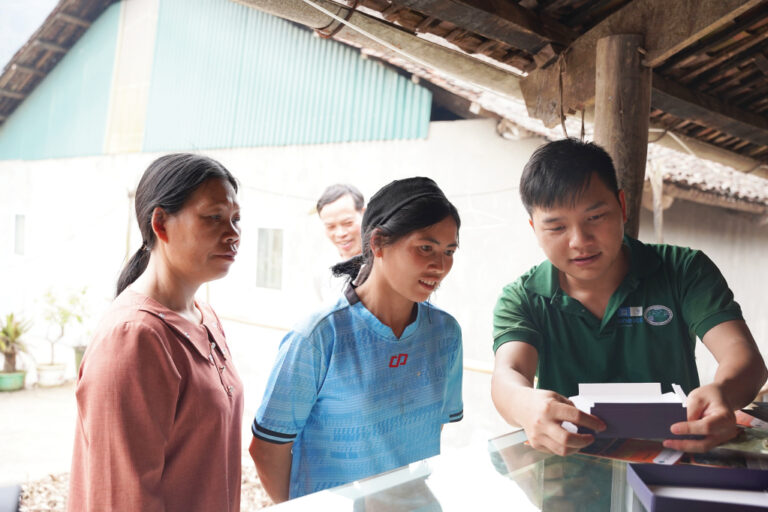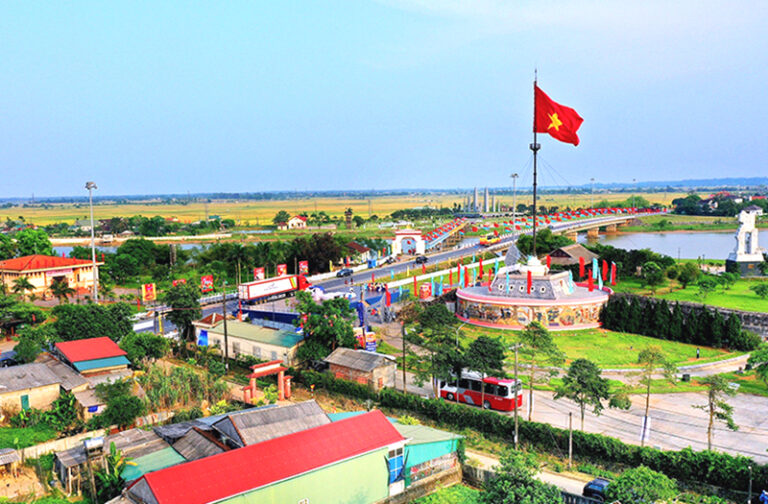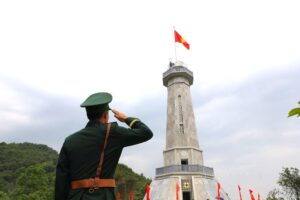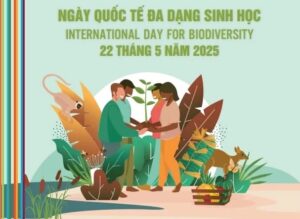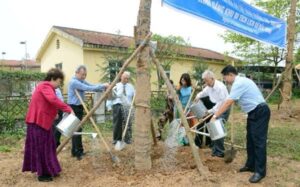The Dao ethnic group in Vietnam has an abundance of ancient books treasured by the people as a link to their past, as well by historians, who can gain important insights into historical events in mountainous regions. Authorities are struggling with how to preserve the ancient works for the future and the Dao people’s unique writing system.
 The Dao people created their own writing system using a combination of borrowed Chinese characters and their own pictographic words during China’s Qing dynasty (1644 - 1912). The earliest Dao book was written in 1732, according to Tran Huu Son, director of the Department of Culture, Sports and Tourism in the north-western province of Lao Cai. The ancient books cover religious topics and beliefs, rituals songs, and record the intermarriages between different Dao groups including Dao Tuyen, Dao Quan Trang, Dao Quan Chet, Dao Do. There is also a rich collection of epic poems. Research by experts over the last three years has revealed 53 epic poems from different Dao groups living in Lao Cai. Some of the poems tell the tales of legendary heroes and geniuses, who contributed to the people. An original and important type of Dao ancient books is called ‘tin ca’, which are letters written in rhyming prose. The Dao used to send this tin ca to their loved ones when they moved to a new region, talking about the reasons for their departure, their immigration process, as well as important regional events. The Culture, Sports and Tourism Department of Lao Cai Province undertook an ambitious project in 2002-2004 to collect and catalogue hundreds of books from hundreds of villages in Lao Cai. Among the collected works was a book owned by Phung Xuan Thi describing the migration of the Dao people into Vietnam in the 13th century. However, most other books addressing the people’s migration in the country point to arrivals during the 16-17th and 18-19th centuries and highlight that the people consistently rose up against the Chinese feudalist rule. The fate of the ancient books remains in jeopardy. Recently, the Lao Cai provincial People’s Committee allowed the provincial Culture, Sports and Tourism Department to engrave a seal into the books identifying them as a "Cultural Vestige". Yet, there is no money to provide much needed preservation of the works or to keep the books out of the hands of private collectors, who just want to make a quick profit. According to the department, to date there are 274 out of 500 villages, whose various ancient books have been checked for authenticity and catalogued. The number of books containing literature, poem and other communications now number 800. The department has launched a campaign to preserve the works. Classes have been started to teach Dao language and writing. To date, there have been 15 classes with participants coming from all Dao villages in the area. Further funding must be found, however, to attract and provide services for more students and to find a solution for the preservation of the ancient books.
The Dao people created their own writing system using a combination of borrowed Chinese characters and their own pictographic words during China’s Qing dynasty (1644 - 1912). The earliest Dao book was written in 1732, according to Tran Huu Son, director of the Department of Culture, Sports and Tourism in the north-western province of Lao Cai. The ancient books cover religious topics and beliefs, rituals songs, and record the intermarriages between different Dao groups including Dao Tuyen, Dao Quan Trang, Dao Quan Chet, Dao Do. There is also a rich collection of epic poems. Research by experts over the last three years has revealed 53 epic poems from different Dao groups living in Lao Cai. Some of the poems tell the tales of legendary heroes and geniuses, who contributed to the people. An original and important type of Dao ancient books is called ‘tin ca’, which are letters written in rhyming prose. The Dao used to send this tin ca to their loved ones when they moved to a new region, talking about the reasons for their departure, their immigration process, as well as important regional events. The Culture, Sports and Tourism Department of Lao Cai Province undertook an ambitious project in 2002-2004 to collect and catalogue hundreds of books from hundreds of villages in Lao Cai. Among the collected works was a book owned by Phung Xuan Thi describing the migration of the Dao people into Vietnam in the 13th century. However, most other books addressing the people’s migration in the country point to arrivals during the 16-17th and 18-19th centuries and highlight that the people consistently rose up against the Chinese feudalist rule. The fate of the ancient books remains in jeopardy. Recently, the Lao Cai provincial People’s Committee allowed the provincial Culture, Sports and Tourism Department to engrave a seal into the books identifying them as a "Cultural Vestige". Yet, there is no money to provide much needed preservation of the works or to keep the books out of the hands of private collectors, who just want to make a quick profit. According to the department, to date there are 274 out of 500 villages, whose various ancient books have been checked for authenticity and catalogued. The number of books containing literature, poem and other communications now number 800. The department has launched a campaign to preserve the works. Classes have been started to teach Dao language and writing. To date, there have been 15 classes with participants coming from all Dao villages in the area. Further funding must be found, however, to attract and provide services for more students and to find a solution for the preservation of the ancient books.


